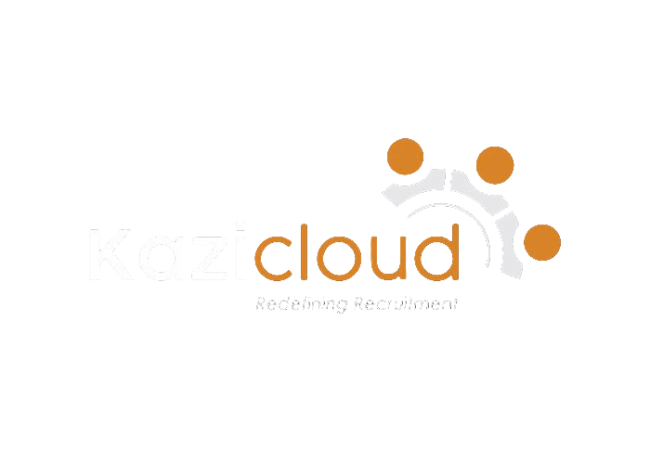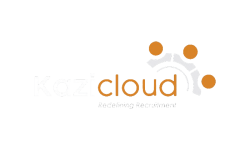Introduction
Imagine: Your organization brimming with driven, adaptable individuals who consistently push boundaries and drive innovation. That’s the power of high-potential talent, and in today’s fiercely competitive job market, securing and retaining them is crucial for success.
Attracting high-potential talent isn’t easy. With enticing offers and flexible options readily available, they have choices.
This article equips you, HR professionals and business leaders, with a comprehensive toolkit to identify, attract, and retain high-potential talent.
Why They Matter:
Future Leaders: They possess the drive, skills, and potential to excel in future roles, ensuring a pipeline of internal talent for leadership positions.
Innovation Engines: Their adaptability and thirst for learning fuel creative problem-solving and drive growth.
Employee Magnets: Their engagement and success attract top talent, creating a virtuous cycle of talent acquisition.
Identifying the Gems:
Performance: Look beyond metrics. Do they consistently exceed expectations, tackle challenges head-on, and demonstrate a growth mindset?
Leadership Potential: Watch for natural influencers who inspire and motivate their teams, even in junior roles.
Skills & Competencies: Analyze their technical and soft skills, like communication, problem-solving, and teamwork.
Attraction Strategies:
Employer Branding: Showcase your positive work culture, career development opportunities, and commitment to employee growth.
Targeted Recruitment: Leverage social media, online platforms, and talent pipelines to reach the right candidates.
Competitive Offers: Provide market-competitive salaries, benefits, and perks tailored to their needs and aspirations.
Retention Strategies:
- Continuous Learning: Offer training programs, mentorship, and opportunities for skill development to keep them engaged and evolving.
- Career Growth: Provide clear pathways for advancement, challenging projects, and leadership opportunities.
- Recognition & Rewards: Acknowledge their achievements publicly and offer performance-based incentives.
- Positive Work Environment: Foster open communication, work-life balance, and a collaborative team spirit to make them feel valued and appreciated.
- Remember: Retaining high-potential talent is an ongoing investment. By prioritizing their development and creating a thriving work environment, you cultivate a loyal, high-performing workforce that propels your organization towards success.
The Benefits of Retaining High-Potential Employees:
Retaining high-potential employees can have a significant impact on an organization’s bottom line. These employees are often more engaged, productive, and innovative than their peers. They can also serve as role models and mentors for other employees, helping to build a strong organizational culture. Furthermore, retaining high-potential employees can reduce turnover costs, improve employee morale, and increase overall company performance.
By recognizing the value of these employees and providing them with the support and opportunities they need to thrive, organizations can ensure a brighter future for both their employees and their business.
Studies suggest replacing an employee can cost 1.5-4 times their annual salary, with higher costs for senior or specialized roles.
Understanding the Characteristics of High-Potential Talent
In today’s fast-paced and competitive job market, organizations are constantly on the lookout for individuals who possess the potential to drive innovation, adapt to change, and lead their teams to success. These individuals are often referred to as high-potential talent, and they play a crucial role in the growth and success of any organization. Lets delve into the key characteristics that define high-potential talent and explore how organizations can identify and nurture these individuals.
The Characteristics of High-Potential Talent
Adaptability and Agility
High-potential employees possess a unique ability to adapt to change and thrive in dynamic environments. They are quick to learn new skills, open to new ideas, and are not afraid to take on new challenges. These individuals are often seen as change agents within their organizations, driving innovation and pushing for continuous improvement.
Leadership Potential
High-potential talent often exhibit strong leadership qualities, even at an early stage in their careers. They are natural influencers, capable of motivating and inspiring their teams to achieve their goals. These individuals are not only capable of leading teams but also have the potential to take on larger leadership roles within the organization.
Growth Mindset
High-potential employees have a growth mindset, meaning they believe that their abilities can be developed through dedication and hard work. They are not afraid to take risks, make mistakes, and learn from their experiences. These individuals are constantly seeking opportunities for growth and self-improvement, both personally and professionally.
Results Orientation
High-potential talent are results-driven individuals who are focused on achieving their goals. They are not satisfied with mediocrity and are always striving for excellence. These individuals are not afraid to set ambitious goals, and they possess the drive and determination to see them through to completion.
How to Identify High-Potential Employees
Identifying Performance Indicators
 One way to identify high-potential talent is to look at their performance indicators. This could include their ability to meet or exceed performance goals, their track record of delivering results, and their ability to take on new challenges and responsibilities.
One way to identify high-potential talent is to look at their performance indicators. This could include their ability to meet or exceed performance goals, their track record of delivering results, and their ability to take on new challenges and responsibilities.
Evaluating Past Achievements
Another way to assess potential is to look at an individual’s past achievements. This could include their academic achievements, work experience, and any awards or recognition they have received. Individuals who have a track record of success are more likely to be high-potential talent.
Analyzing Competencies and Skills
High-potential talent often possess a unique set of competencies and skills that set them apart from their peers. These could include technical skills, soft skills, leadership abilities, and problem-solving skills. By analyzing an individual’s competencies and skills, organizations can better understand their potential for success.
Use of Talent Assessment Tools to Identify High-Potential Employees
Personality Tests
-3.png?width=940&name=Webpage%20Image%20(1)-3.png) Personality tests can be a valuable tool for identifying high-potential talent. These tests can help assess an individual’s personality traits, such as their communication style, work preferences, and leadership abilities. By understanding an individual’s personality, organizations can better assess their potential for success.
Personality tests can be a valuable tool for identifying high-potential talent. These tests can help assess an individual’s personality traits, such as their communication style, work preferences, and leadership abilities. By understanding an individual’s personality, organizations can better assess their potential for success.
A Test Gorilla report states that 92.5% of organizations using skills-based hiring saw a reduction in mis-hires.
Cognitive Ability Tests
Cognitive ability tests can also be a useful tool for identifying high-potential talent. These tests measure an individual’s cognitive abilities, such as their problem-solving skills, critical thinking abilities, and ability to learn new information. By assessing an individual’s cognitive abilities, organizations can better understand their potential for success.
Companies using assessment tools report 36% greater satisfaction with new hires. (iMocha blog)
Assessment Centers
Assessment centres can provide a more holistic approach to identifying high-potential talent. These centers typically involve a series of exercises and simulations designed to assess an individual’s competencies, skills, and potential for success. By observing an individual’s behaviour and performance in various situations, organizations can better assess their potential for success.
Structured Interviews
Structured interviews can also be a valuable tool for identifying high-potential talent. These interviews are designed to assess an individual’s competencies, skills, and potential for success in a structured and consistent manner. By asking targeted questions and evaluating an individual’s responses, organizations can better assess their potential for success.
By understanding these characteristics and utilizing the right assessment tools, organizations can better identify and nurture these individuals, ultimately driving innovation, growth, and success within their organizations.
Aberdeen Group research found that companies using pre-hire assessments experienced a 39% lower employee turnover rate.
High-Potential Talent Acquisition Strategies:
Establishing Clear Talent Acquisition Objectives
Identifying Skill Gaps and Future Needs
To effectively identify high-potential talent, organizations must first understand their current workforce and future needs. This involves identifying any skill gaps that exist within the organization and determining the skills and competencies that will be required for future success. By identifying these skill gaps, organizations can better target their recruitment efforts towards individuals who possess the skills and competencies needed to drive the organization forward.
Setting Targets for High-Potential Hires
Once organizations have identified their talent acquisition objectives, they can begin to set targets for high-potential hires. This involves determining the number of high-potential hires needed to fill current and future skill gaps, as well as the specific skills and competencies that these individuals should possess. By setting clear targets, organizations can better focus their recruitment efforts and increase their chances of attracting and retaining high-potential talent.
Step-by-Step Guide to Shortlisting Candidates for An Interview
Building a Strong Employer Brand
Promoting a Positive Work Culture
One of the key factors that attract high-potential talent to an organization is its work culture. Organizations that promote a positive work culture, where employees are valued, supported, and encouraged to grow, are more likely to attract and retain high-potential talent. By promoting a positive work culture, organizations can position themselves as an employer of choice for high-potential individuals.
Highlighting Career Development Opportunities
High-potential individuals are often ambitious and driven, and they are looking for organizations that can offer them opportunities for career development and growth. Organizations that highlight their career development opportunities, such as training programs, mentorship programs, and opportunities for advancement, are more likely to attract and retain high-potential talent. By highlighting these opportunities, organizations can position themselves as an employer of choice for high-potential individuals.
Showcasing Company Successes and Growth
High-potential individuals are often looking for organizations that are successful and growing. Organizations that showcase their successes, such as awards, achievements, and growth metrics, are more likely to attract and retain high-potential talent. By showcasing their successes, organizations can position themselves as an employer of choice for high-potential individuals.
Targeted Recruitment Strategies
Utilizing Social Media and Online Platforms
In today’s digital age, high-potential individuals are often found on social media and online platforms. Organizations that utilize social media and online platforms to target high-potential individuals are more likely to attract and retain them. By utilizing social media and online platforms, organizations can reach a larger audience of high-potential individuals and increase their chances of attracting and retaining them.
Engaging with Passive Candidates
Many high-potential individuals are not actively seeking new opportunities, but they may be open to exploring them if the right opportunity arises. Organizations that engage with passive candidates, such as through networking events, industry conferences, and targeted outreach, are more likely to attract and retain high-potential talent. By engaging with passive candidates, organizations can build relationships with them and increase their chances of attracting and retaining them.
Building a Talent Pipeline
Organizations that actively build a talent pipeline of high-potential individuals are more likely to attract and retain them. This involves identifying potential high-potential candidates early in their careers and building relationships with them over time. By building a talent pipeline, organizations can position themselves as an employer of choice for high-potential individuals and increase their chances of attracting and retaining them.
High-potential talent acquisition requires a strategic and targeted approach. By establishing clear talent acquisition objectives, building a strong employer brand, and utilizing targeted recruitment strategies, organizations can increase their chances of attracting and retaining high-potential talent. By doing so, they can drive innovation, growth, and success within their organizations.
High-Potential Employee Retention Strategies
In today’s competitive job market, retaining high-potential talent can be a challenge. Let’s explore effective retention strategies that organizations can use to keep their high-potential employees engaged, motivated, and committed to the organization.
Offering Competitive Compensation and Benefits
- Providing Market-Competitive Salaries: One of the most effective ways to retain high-potential employees is by offering competitive salaries that reflect the market rate for their skills and experience. Employees who feel they are being compensated fairly are more likely to remain loyal to the organization.
- Offering Additional Perks and Benefits: In addition to competitive salaries, organizations can offer additional perks and benefits to attract and retain high-potential talent. This could include flexible work arrangements, health and wellness programs, and opportunities for professional development.
Creating a Culture of Continuous Learning and Development
- Providing Opportunities for Skill Enhancement: High-potential employees are often eager to learn and grow, so organizations can provide them with opportunities for skill enhancement through training programs, workshops, and seminars. This not only helps employees develop new skills but also demonstrates the organization’s commitment to their growth and development.
- Supporting Career Growth Through Training and Coaching: Organizations can also support the career growth of high-potential employees by providing them with access to career coaching and mentoring programs. This can help employees navigate their career paths, set goals, and develop the skills they need to succeed.
Recognizing and Rewarding High-Potential Talent
- Establishing Recognition Programs: Recognizing the achievements and contributions of high-potential employees is essential for retaining their talent. Organizations can establish recognition programs that highlight the accomplishments of these individuals and provide them with opportunities for public recognition.
- Providing Opportunities for Advancement: High-potential employees are often looking for opportunities to advance in their careers. Organizations can provide them with opportunities for advancement by offering them challenging projects, leadership roles, and opportunities for promotion.
- Offering Performance-Based Incentives: Organizations can also offer high-potential employees performance-based incentives, such as bonuses, profit-sharing, or stock options, to reward them for their contributions to the organization’s success.
Fostering a Positive Work Environment
- Encouraging Open Communication and Feedback: High-potential employees thrive in an environment where they feel their opinions are valued and their voices are heard. Organizations can foster a positive work environment by encouraging open communication and providing employees with opportunities for feedback.
- Promoting Work-Life Balance: Organizations can also promote work-life balance by offering flexible work arrangements, such as remote work or flexible hours. This can help employees manage their personal and professional lives more effectively, reducing stress and increasing job satisfaction.
- Encouraging Team Collaboration and Support: Finally, organizations can encourage team collaboration and support by fostering a culture of teamwork and collaboration. This can help high-potential employees feel like they are part of a team and can contribute to the organization’s success.
In conclusion, retaining high-potential talent is essential for the long-term success of any organization. By offering competitive compensation and benefits, creating a culture of continuous learning and development, recognizing and rewarding high-potential talent, and fostering a positive work environment, organizations can increase their chances of retaining their most valuable employees. By doing so, they can drive innovation, growth, and success within their organizations.
Finally, for Human resource managers and business owners, it’s essential to remember that retaining high-potential talent is an ongoing process. It requires continuous effort and investment in the development and growth of these individuals. By prioritizing the retention of high-potential talent, organizations can ensure a brighter future for both their employees and their businesses. Get in touch with us for practical tips on how to revolutionize your company’s talent strategy.
https://kazicloud.co.ke/how-is-your-organization-attracting-and-retaining-top-talent/









